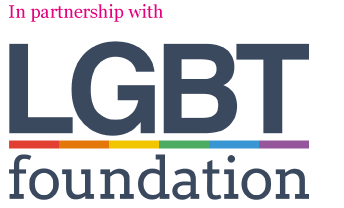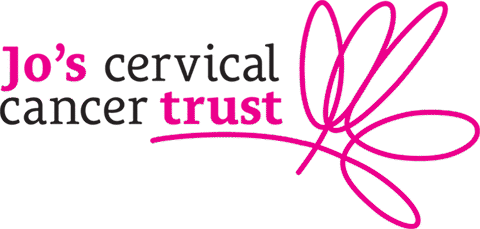Language to use when supporting trans men and/or non-binary people
Last modified: 6 June 2025, 07:43
 Glossary
Glossary
This glossary explains some of the words we use in our information or that you might hear used by a patient. This is not a definitive list and we recognise that some people may prefer different words. It is still necessary to check the words or phrases your patient would prefer.
Using the correct language when referring to someone’s gender identity is a simple and effective way to demonstrate support and recognition. If incorrect language is used without being corrected, it can cause someone to feel hurt or distressed. This may lead them to leave and to eventually seek support elsewhere.
Remember, everyone makes mistakes from time to time. It’s important that you acknowledge them, correct yourself, learn from them, and move on. Dwelling on mistakes could make the person you are talking to feel more uncomfortable.
See all our resources on this topic >
A B C D E F G H I J K L M N O P Q R S T U V W X Y Z
B
Bonus hole – An alternative word for the vagina preferred by some trans men and/or non-binary people with a cervix. It is important to check which words someone would prefer to use.
C
Cisgender or cis – Someone whose gender identity aligns with the sex they were assigned at birth.
Congruence – Sense of harmony and ease with our gender.
D
Deadnaming – Intentionally or unintentionally using the former name of a trans and/or non-binary person without their consent.
Discrimination – Treating someone unfairly because of a certain characteristic, in this case being trans and/or non-binary. It is against the law to discriminate against someone because of their gender identity.
F
Front hole – An alternative word for the vagina preferred by some trans men and/or non-binary people with a cervix. It is important to check which words someone would prefer to use.
G
Gender dysphoria – A sense of unease or distress that a person may feel because of a mismatch between their sex assigned at birth and their gender identity. Gender dysphoria can change over time and not everyone who is non-binary or transgender experiences gender dysphoria.
Gender expression – A person’s external presentation of their gender identity, which could include clothing, mannerisms and interests.
Gender identity – There are lots of societal and cultural expectations about how people of different genders should behave, but gender is often an innate sense of self and personal identity. This is sometimes referred to as gender identity. Gender identity is usually expressed as spectrum that runs between masculine and feminine, with some gender identities not falling into either categories. Gender identity may or may not match someone’s sex assigned at birth.
Genderqueer – A person who does not subscribe to conventional gender distinctions and who identifies with neither or both the male and female gender.
I
Intersex – An umbrella term describing people born with reproductive or sexual anatomy and/or a chromosome pattern that can’t be classified as typically male or female. Those variations are also sometimes referred to as Differences of Sex Development (DSD). While some people can have an intersex condition and be trans and/or non-binary, they are separate and should not be conflated.
L
LGBTQ – An acronym that stands for lesbian, gay, bisexual, transgender and queer or, rarely, questioning. It sometimes has a plus symbol (+) at the end to denote other identities within the community.
M
Microaggression – Brief behaviours, verbal or otherwise, that intentionally or unintentionally reveal bias or prejudice and make the target feel uncomfortable or distressed.
Misgendering – Referring to someone using a word, usually a name or pronoun, that does not align with their gender.
N
Neopronouns – Pronouns increasingly used in place of ‘she’, ‘he’ or ‘they’. For example, ‘xe/xem’ (pronounced zee/zem) and ‘ze/hir’ (pronounced zee/here).
Non-binary – An umbrella term for someone whose gender identity does not fall within the male-female binary.
P
Pronouns – Gendered words or language we use to refer to someone in conversation, that indicate their gender identity. For example, ‘he’, ‘she’, ‘they’ or ‘xe’.
S
Sex – A label assigned at birth that is based on a person’s sex traits or characteristics.
Sexual orientation – Someone’s sexual attraction, or lack of, to other people.
T
Trans – An umbrella term to describe people whose gender identity is not the same as the sex they were assigned at birth. It includes many gender identities, including but not limited to transgender, non-binary and genderqueer.
Transgender man – A term used to describe someone who was assigned female at birth but whose gender identity is male. It can be shortened to trans man. Sometimes the terminology female to male or FTM is used.
Transgender woman – A term used to describe someone who was assigned male at birth but whose gender identity is female. It can be shortened to trans woman. Sometimes the terminology male to female or MTF is used.
Transitioning – The steps a trans person may take to live authentically in line with their gender identity. Someone’s transition will be individual to them. For some people, transitioning involves medical intervention, such as hormone therapy and surgery, but not all trans people want or are able to have this. There is a social aspect to someone’s transition, which may include a change of name or documentation, a change of pronouns, and a change in presentation or expression.
Transphobia – A range of negative feelings, attitudes or actions towards trans or gender-diverse people.
Useful links and further reading
- LGBT Foundation – A guide to being a trans ally >
- NHS Digital service manual – Inclusive language >
- Scottish Transgender Alliance – Introductory guide for supporting transgender people >
- Stonewall – Glossary of terms >
- Them (US website) – Gender-Neutral Pronouns 101: Everything You’ve Always Wanted to Know >
- TransgenderNI – Terminology and language >
Thank you to all the experts who checked the accuracy of this information, and the volunteers who shared their personal experience to help us develop it. A special thanks to Harris, Laurie, Nat and Seb for allowing us to share their stories.
This information was developed in response to research done by Jo’s Cervical Cancer Trust in collaboration with Tavistock and Portman NHS Foundation Trust and 56 Dean Street.
References
- Berner, AM et al (2020). A Survey of Attitudes to Cervical Cancer Screening in Trans Men and Non-binary People in the UK. Manuscript under review.
- Moseson, H., et al (2020). The Imperative for Transgender and Gender Nonbinary Inclusion. Obstetrics and Gynecology. 135(5). pp.1059-1068.
- Bouman, W. P., et al (2016). Language and trans health. International Journal of Transgenderism. 18(1). pp.1-6.
We write our information based on literature searches and expert review. For more information about the references we used, please contact [email protected]
August 2023 – Please be aware that this information for health professionals is currently undergoing regular review in line with our editorial policy. However the information remains valid.
Barriers to cervical screening >
Understand the challenges your patients may face and get tips to support them.

